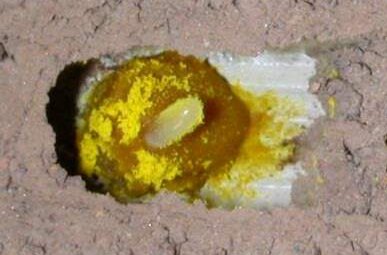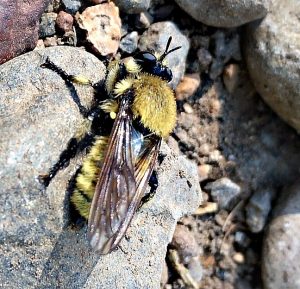Save All the Bees: The Mason Bee
Honey bees are in the public eye, but there are many native bee species that need our attention. Native bees are on the endangered species list.
Some bees are known to us, but not every bee has been cataloged. So we don’t yet have a true understanding of what we are losing. Yes, we love honey bees and our honey, but the most exceptional of all the buzzing pollinators are the bees that inhabited this land before honey bees were brought here.
By Sy Maher
Solitary bees vary in size, do not have a queen, produce wax, or live in colonies. Solitary bees are the most efficient and effective pollinators around, but to not share the notoriety of the honey bees. Here in the US, there are 4000 species of native bees. Virtually all of our native bees live on their own.
Sometimes the solitary bee isn’t always as solitary as its name suggests. Some may nest as a single female while others prefer to nest in a communal setting. Unlike honey bee hives, some solitary bees may share a sort of neighborhood. For instance, the Mason bee likes to give the appearance of being a hive by sharing the same receptacle but maintaining their own cell.

Mason bee
Mason bees are named for the masonry-like materials they use. Some burrow out small holes in wood already weakened by wood-boring insects, while others like to use cracks in brick walls. Almost any dark pre-made residence will do, even an abandoned rodents den.
Since they do not excavate their own nests, there must be room enough inside a habitat for egg laying. After mating, the female wants to provide food for their young. She visits enough flowers until she has collected a mass of pollen and nectar. Once the mass is great enough, the Mason bee lays an egg and then covers it with mud, forming a little cell. Then the whole process starts again until she has filled up the cavity she created.

Mason bee nest cell with egg on pollen bed
From April to June Mason bees collect nectar and pollinate.There are many types of Mason Bees, and although they don’t make honey, they are responsible for pollinating 1 in every 3 bites of food we consume in the US. It takes only 250-300 females to pollinate an entire acre of orchard or produce a blast of colorful flowers in a field. Plus they are docile. They do have stingers but only react if trapped or squeezed.
Thanks for stopping by and learning a little about the Mason Bee. We now know we need to watch out for all of our little helper bees. In some of our previous blogs. We’ve explained how we can plant gardens to help our bees have food, put out little marble filled water bowls to keep them hydrated and put up bee motels to help our little friends on the endangered species list find shelter in a disappearing landscape. All of us at Luckey Bee Farms believe in saving bees, but I personally never realized there were so many to save. Or, that the variety of native bees range from vibrantly beautiful to that of the fuzzy, feathered creature like the Mason bee. But each has its place and specialty.
Watch out for our next blog post, and I do mean Watch Out! The Killer Bees are Coming,



One thought on “Save All the Bees: The Mason Bee”